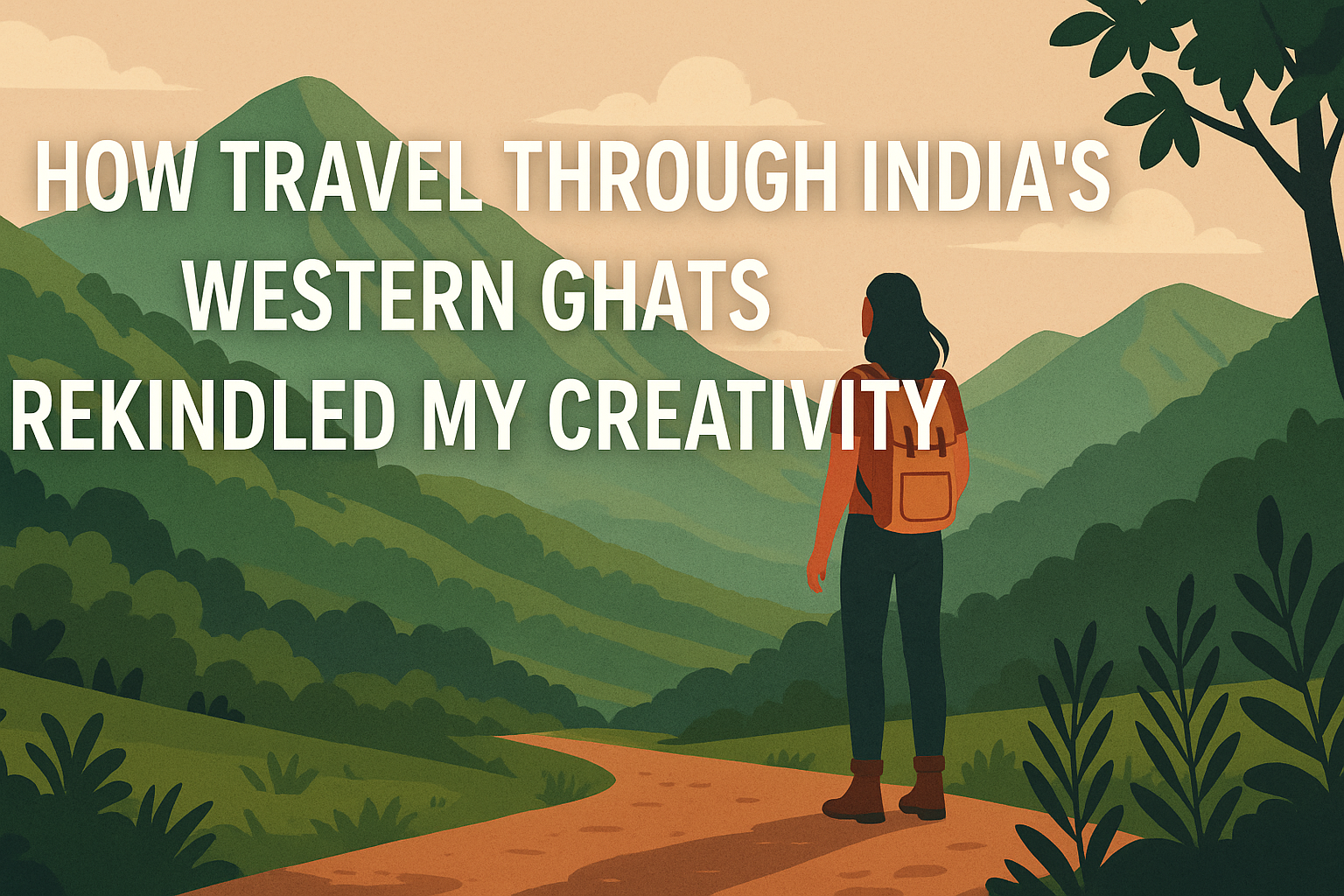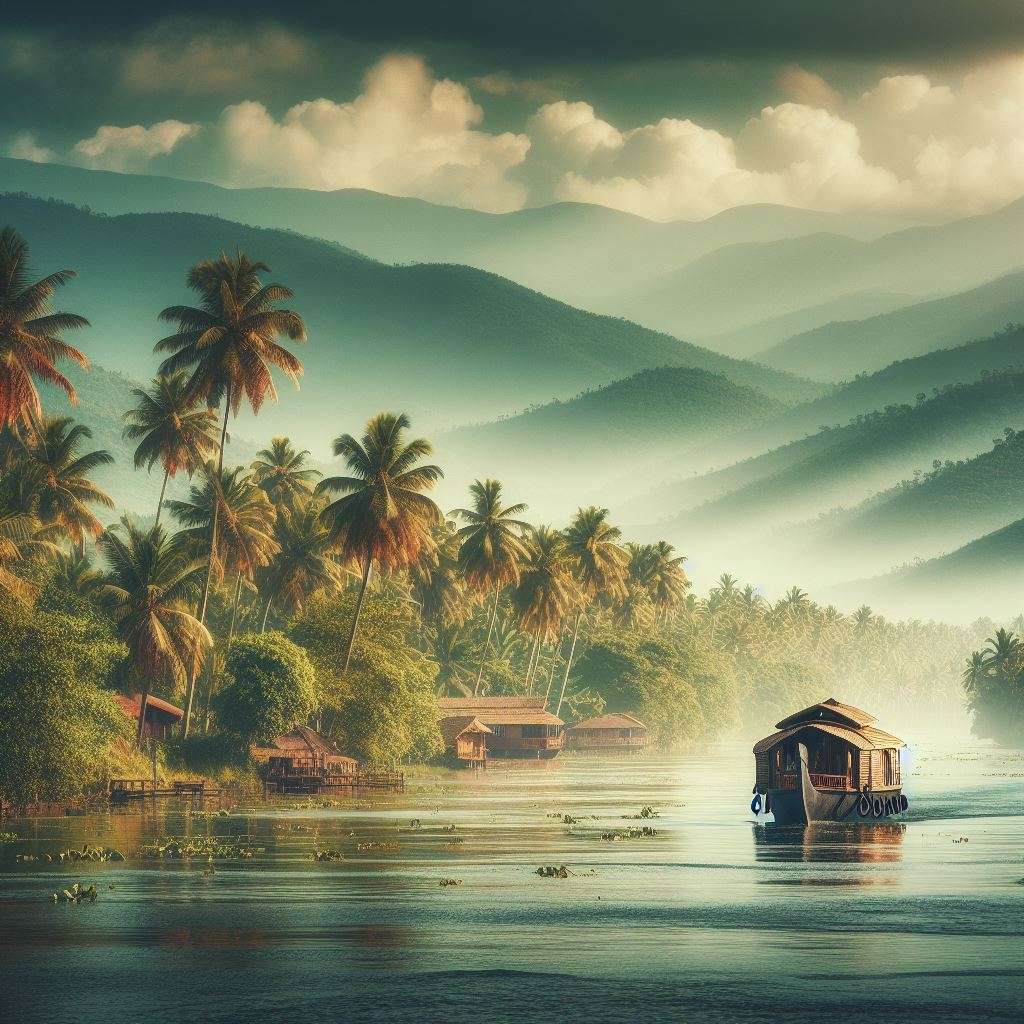
Ever stumbled upon a place so magical you hesitate to share it? That’s the dilemma with Aurapani Waterfall, Bilaspur’s best-kept secret that’s finally getting the attention it deserves.
You’ve seen those Instagram-perfect waterfalls, but Aurapani offers something those filtered photos can’t capture—an authentic escape where the only notification sound is water crashing against ancient rocks.
Just 45 kilometers from Bilaspur city, Aurapani Waterfall blends pristine natural beauty with accessibility that doesn’t require you to be a seasoned trekker with specialized gear.
But here’s what the pretty pictures don’t tell you about this hidden nature retreat…
Discovering Aurapani Waterfall: Bilaspur’s Best-Kept Secret
A. Location and Accessibility: How to Reach This Natural Wonder
Tucked away in the lush landscapes of Bilaspur district, Aurapani Waterfall sits about 35 kilometers from Bilaspur city center. Finding this hidden gem requires a bit of adventure, but isn’t that half the fun?
From Bilaspur city, you’ll need to take the Bilaspur-Raipur Highway (NH-130) for approximately 20 kilometers until you reach Devri village. At Devri, take the right turn onto a narrower road that winds through small villages and forest patches for another 15 kilometers. The last 3 kilometers to the waterfall involve a light trek through dense forest—perfect for nature enthusiasts who enjoy a little expedition.
If you’re driving, you can park at the designated spot near Sonbarsa village and begin your trek from there. The path is mostly well-marked, though hiring a local guide (available for ₹200-300) is recommended for first-time visitors.
Public transport options are limited, but shared jeeps run from Bilaspur to Devri regularly. From Devri, you might need to arrange a private vehicle to Sonbarsa, or hop on a local tempo if you’re visiting during weekends when they’re more frequent.
B. The Legend Behind Aurapani: Local Folklore and History
The name “Aurapani” has a beautiful story behind it. According to local tribal communities, primarily the Gonds who have inhabited this region for centuries, the waterfall’s mist creates a golden aura during sunrise and sunset—hence “Aura” (golden) and “pani” (water).
An intriguing local legend tells of a tribal princess who fell in love with a forest spirit. When their love was forbidden, the princess wept at this very spot, and her tears became the cascading waterfall we see today. The mist, they say, is her spirit still dancing around her tears.
Historically, this area served as a sacred gathering place for tribal councils during important festivals and ceremonies. The unique rock formations surrounding the waterfall were used as natural seating areas during these gatherings, some dating back nearly 500 years according to village elders.
The region also played a small but significant role during India’s freedom movement, serving as a hiding spot for freedom fighters escaping British forces in the 1940s.
C. Best Time to Visit for the Perfect Experience
Timing your visit to Aurapani Waterfall can make or break your experience. The waterfall transforms dramatically with the seasons:
Monsoon (July-September): This is when Aurapani roars to life with full force. The waterfall is at its most majestic and powerful, with water thundering down the 100-foot drop. The surrounding forest turns impossibly green, and smaller cascades appear throughout the area. While spectacular, the trek can be slippery and sometimes dangerous during heavy rains.
Post-Monsoon (October-December): My personal favorite time to visit. The water volume remains impressive, the weather is pleasant with temperatures between 18-25°C, and the trekking paths are relatively dry. The forest buzzes with wildlife returning after the heavy rains.
Winter (January-February): The waterfall thins out but remains flowing. The real magic happens on winter mornings when mist envelops the entire area, creating that mystical golden aura that gave the falls its name. Temperatures range from 10-20°C, perfect for extensive exploration.
Summer (March-June): By late summer, Aurapani reduces to a thin stream, but the large pool at the base remains perfect for swimming. With temperatures soaring to 35-42°C, the cool water offers sweet relief. However, avoid the peak summer months of May-June when the heat can be unbearable.
D. Why Aurapani Stands Out Among Chhattisgarh’s Natural Attractions
In a state blessed with numerous waterfalls like Chitrakote and Teerathgarh, what makes Aurapani special?
The answer lies in its pristine, untouched quality. Unlike its more famous cousins that have developed tourist infrastructure, Aurapani remains raw and authentic. You won’t find souvenir shops or food stalls here—just pure nature in all its glory.
The multi-tiered cascade creates not just one but three distinct waterfall experiences as it tumbles down the hillside. The top tier offers panoramic views of the surrounding forest, the middle section features fascinating rock formations that split the water into intricate patterns, and the bottom pool is perfect for a refreshing dip.
The biodiversity around Aurapani is remarkable even by Chhattisgarh standards. The area is home to over 120 bird species, making it a birdwatcher’s paradise. Lucky visitors might spot barking deer, wild boars, and even the occasional sloth bear in the early mornings.
What truly sets Aurapani apart is how it changes throughout the day. Visit at dawn to witness the golden rays filtering through the mist, creating rainbow effects. Return at sunset when the reddish glow transforms the water into what looks like flowing amber.
Planning Your Visit to Aurapani Waterfall
A. Essential Items to Pack for a Day Trip
Ready to explore Aurapani Waterfall? Don’t just throw random stuff in your backpack. Pack smart.
First things first—comfortable footwear is non-negotiable. The trail gets slippery, especially during monsoon season. Sturdy trekking sandals or shoes with good grip will save you from embarrassing falls and twisted ankles.
Water is your best friend here. Carry at least 2 liters per person. The hike can be draining, and staying hydrated is crucial. Add some electrolytes to your water for those extra hot days.
Quick-dry clothes are a game-changer. You’ll want to dip into the refreshing pools, and nobody enjoys the squelchy walk back in soaked cotton. Throw in a lightweight towel and a change of clothes too.
Sun protection isn’t optional:
- Broad-spectrum sunscreen (waterproof)
- Sunglasses
- Wide-brimmed hat
- UV-protective clothing
Your phone will die. Trust me. Bring a power bank and keep your devices in waterproof pouches or zip-lock bags. The spray from the falls reaches farther than you’d expect.
Food-wise, pack energy-dense snacks that won’t melt or crumble:
- Trail mix
- Protein bars
- Fruits like apples and oranges
- Sandwiches wrapped in aluminum foil
Don’t forget a small first-aid kit with band-aids, antiseptic wipes, pain relievers, and any personal medications.
B. Recommended Duration and Itinerary Options
The sweet spot for experiencing Aurapani Waterfall is 4-6 hours, but I’ve got options depending on how much time you have.
Half-Day Express (3-4 hours)
- 8:00 AM: Start from Bilaspur city
- 9:00 AM: Arrive at the trailhead
- 9:15 AM: Begin the trek
- 10:30 AM: Reach the waterfall, swimming and photography
- 12:00 PM: Start return journey
- 1:00 PM: Back to Bilaspur
Full-Day Immersion (6-8 hours)
- 8:00 AM: Depart Bilaspur
- 9:00 AM: Reach trailhead, prep for trek
- 9:30 AM: Start trekking at a leisurely pace
- 11:00 AM: Arrive at the waterfall
- 11:00 AM – 2:00 PM: Swimming, photography, picnic lunch, exploring upper cascade
- 2:30 PM: Begin return trek
- 4:00 PM: Back to Bilaspur
If you’re a nature enthusiast, add an hour to explore the surrounding forest trails. The biodiversity around Aurapani is stunning, with rare butterflies and birds making appearances if you’re patient enough.
C. Photography Tips: Capturing Aurapani’s Splendor
The magic hour isn’t just a fancy photography term—it’s your secret weapon at Aurapani. Arrive between 8-10 AM when the sun hits the water just right, creating natural rainbows in the mist.
For those dreamy long-exposure shots that make water look like silk:
- Bring a tripod (even a mini one works)
- Use a slower shutter speed (1/15 sec or slower)
- Morning hours have less crowd interference
Got a smartphone? No problem. Most modern phones have “Pro” or manual modes. Enable HDR for balanced exposure between the bright sky and shadowy rocks.
The most Instagram-worthy angles:
- From the small cave behind the falls (keep your gear protected!)
- Low angle shots from the base pool
- Through the hanging vines on the right side
Don’t just photograph the main falls. The smaller cascades upstream often create more interesting compositions with their intimate scale and perfect framing opportunities.
D. Entry Fees and Permits: What You Need to Know
Good news—Aurapani Waterfall doesn’t charge an entry fee! It’s one of those rare natural attractions that remains free to visit.
However, you’ll need to register your name at the forest checkpost about 1 km before the trailhead. This is for safety tracking, not for revenue.
If you’re planning to bring professional camera equipment (DSLRs with multiple lenses, drones, etc.), you might need a photography permit from the Forest Department office in Bilaspur. It costs ₹500 for still photography and ₹1000 for video shooting.
Camping overnight? That requires a special permit obtained at least 48 hours in advance from the District Forest Office.
E. Accessibility Information for All Travelers
Let’s be honest—Aurapani isn’t the most accessible destination. The 1.5 km trail from the road involves moderate difficulty with some steep sections and uneven terrain.
For travelers with mobility challenges:
- The first viewing platform (400m from the parking area) is accessible via a relatively flat path
- Assistance animals are permitted, but bring water for them
- Walking sticks or trekking poles are highly recommended for anyone with balance issues
Families with young children should note that there are no guardrails at the upper viewpoints. Kids under 12 should be closely supervised, especially near the water’s edge.
Cell reception is spotty at best. Download offline maps before you go, and inform someone of your plans if you’re traveling solo or in a small group.
Immersive Experiences at Aurapani
Swimming and Water Activities: Safety Guidelines
Aurapani Waterfall isn’t just for looking at – it’s for jumping in! The crystal-clear pools at the base of the waterfall create perfect natural swimming areas, but safety comes first.
Before you dive in, check the water depth. The main pool near the waterfall reaches about 6-8 feet deep in the center, while the smaller pools upstream stay around 3-4 feet. The water flows pretty fast during monsoon season (July-September), so swimming isn’t recommended then.
Kids under 12 should always wear life jackets – you can rent these from vendors near the entrance for about ₹100 per day. Non-swimmers, stick to the shallow areas marked with colored ropes.
The rocks get super slippery, so water shoes with good grip are a game-changer. Trust me, your toes will thank you. And that perfect Instagram jump shot? Make sure you’re jumping only from designated spots marked with blue flags.
If you’re bringing inflatable toys or tubes, double-check for sharp rocks before setting them in the water. The current can be tricky in certain spots, so pay attention to the red flag areas – those are no-go zones.
Hiking Trails Around the Waterfall Area
The magic of Aurapani extends way beyond the waterfall itself. Four main trails branch out from the main viewing area, each offering something completely different.
The Sunrise Trail (1.2 km) is pretty easy and takes about 30 minutes, leading to a ridge with spectacular morning views. Early birds, this one’s for you – hit the trail by 5:30 AM to catch the sun painting the valley gold.
For more adventure, the Forest Loop (3.5 km) winds through dense sal trees and bamboo groves. This moderate hike takes about 2 hours and circles back to the main area. Keep your eyes peeled for the ancient banyan tree about halfway through – it’s over 200 years old!
The Ridge Walk (2.8 km) offers the most dramatic views but gets steep in places. The panoramic vista of the entire Aurapani Valley makes the climb worth every drop of sweat.
My personal favorite is the Hidden Pools Trail (1.8 km), which follows the stream upward to reveal three smaller, secluded waterfalls that most visitors never see. The trail’s moderate difficulty means you’ll have these gems mostly to yourself.
Pro tip: Download the trail maps before you go – cell service is spotty at best once you’re on the trails.
Picnic Spots and Relaxation Areas
Need a break from all that adventure? Aurapani offers some seriously dreamy spots to unwind.
The Riverside Meadow sits about 200 meters downstream from the main waterfall and features wooden picnic tables under massive mango trees. The gentle rushing of the water makes this spot perfect for a lazy afternoon meal. Get there before noon to snag the tables with the best views.
Eagle Point requires a short 10-minute climb but rewards you with flat stone platforms overlooking the entire waterfall system. The natural rock formations create perfect backrest loungers, and the breeze keeps the bugs away.
For those seeking quiet, the Bamboo Grove tucked behind the visitor center offers hammocks strung between trees (available first-come, first-served) and grass mats for rent (₹50 for the day).
My secret recommendation? Head to the Sunset Rock about 30 minutes before dusk. This flat stone outcropping sits perfectly positioned to watch the sun sink behind the hills while the waterfall catches the golden hour light. Pure magic.
Wildlife and Flora Spotting Opportunities
Aurapani isn’t just about the water – it’s a mini biodiversity hotspot that changes with the seasons.
Morning visits (6-8 AM) offer the best chance to spot barking deer and wild boars coming to drink at the quieter pools upstream. Bring binoculars for glimpses of paradise flycatchers and hornbills in the canopy above the falls.
The Butterfly Corner near the second viewpoint explodes with activity between 10 AM and 2 PM, especially from April to June. Over 35 butterfly species have been documented here, including the spectacular blue oakleaf and common jezebel.
Plant lovers will go crazy for the wild orchids that bloom after the first monsoon showers in July. Look for them clinging to trees along the Hidden Pools Trail. The Fern Wall on the eastern approach to the waterfall showcases at least 12 different fern species, creating a prehistoric feel.
In October and November, keep your eyes peeled for the rare ghost orchid that flowers for just a few weeks in the darkest parts of the forest surrounding the falls.
Accommodation Options Near Aurapani Waterfall
Nearby Hotels and Resorts for Different Budgets
Finding the perfect place to stay near Aurapani Waterfall doesn’t have to be a headache. Bilaspur offers a surprising range of accommodations that won’t break the bank.
For luxury seekers, the Green Valley Resort sits just 7 kilometers from the waterfall. Their deluxe rooms start at ₹4,500 per night and come with stunning views of the surrounding hills. The on-site restaurant serves authentic Chhattisgarhi cuisine that’ll make your taste buds dance.
Don’t have that kind of cash? No problem. Hotel Aananda Inn provides comfortable mid-range rooms starting at ₹2,200, with clean facilities and helpful staff who know all the local secrets. They’ll even arrange transportation to the waterfall if you ask nicely.
Budget travelers will love Waterfall Homestay, a simple but clean guesthouse just 3 kilometers from Aurapani, with rooms starting at just ₹800 per night. The owner, Mr. Sharma, makes a mean breakfast that’s included in your stay.
Here’s a quick comparison of your options:
| Accommodation | Distance from Waterfall | Price Range | Amenities |
|---|---|---|---|
| Green Valley Resort | 7 km | ₹4,500-7,000 | Swimming pool, restaurant, spa |
| Hotel Aananda Inn | 5 km | ₹2,200-3,500 | Restaurant, Wi-Fi, transport service |
| Waterfall Homestay | 3 km | ₹800-1,200 | Breakfast included, shared kitchen |
Homestay Experiences with Local Families
Want the real Bilaspur experience? Skip the hotels and book a homestay with a local family. Trust me, you won’t regret it.
The Singh Family Homestay offers guests a private room in their traditional Chhattisgarhi home for around ₹1,200 per night. Mrs. Singh’s cooking is legendary in these parts – her special chila (savory pancakes) will have you asking for seconds and thirds.
For something more immersive, try Lakshmi’s Village Stay. For just ₹950 per night, you’ll live like a local in a mud-walled home with modern bathrooms. Lakshmi and her husband take guests to collect herbs from their garden before cooking meals together.
These homestays offer something hotels simply can’t – genuine connections with locals who know the area inside out. They’ll show you hidden spots around Aurapani that most tourists never discover.
Most homestay hosts are happy to pack you a lunch for your waterfall trek or arrange local guides who know the safest paths. Some even offer cultural experiences like learning traditional Chhattisgarhi dance or trying your hand at local crafts.
Camping Possibilities for Adventure Seekers
Got an adventurous streak? Ditch the four walls entirely and camp under the stars near Aurapani Waterfall.
Forest Camp Aurapani offers pre-set canvas tents about 2 kilometers from the waterfall for ₹1,500 per night. They provide sleeping bags, mats, and a campfire area where guides share local legends that’ll give you goosebumps.
For the truly adventurous, BYO camping is possible in designated areas with proper permits. The flat clearing about 1.5 kilometers from the waterfall is perfect for pitching your own tent. Just remember to arrange permits through the local forest department at least 48 hours in advance.
A word of caution though – camping here isn’t for beginners. The area has wild animals and unpredictable weather. Always camp with a local guide, carry enough water, and don’t forget to pack out all your trash.
The upside? Waking up to birdsong, catching the first rays of sunlight on the hills, and having the waterfall nearly to yourself before day-trippers arrive. Those moments are absolutely priceless.
Beyond the Waterfall: Extending Your Bilaspur Adventure
A. Must-Visit Attractions Within a 20km Radius
You’ve made it to Aurapani Waterfall, but trust me, Bilaspur has so much more up its sleeve. Within just a 20km radius, you’ll find some jaw-dropping spots that most tourists never discover.
First stop? Achanakmar Tiger Reserve. Just 15km from Aurapani, this forested wonderland is home to tigers, leopards, and over 150 bird species. Early morning safaris give you the best chance to spot wildlife, and the dense sal forests create the perfect backdrop for nature photos.
Don’t miss Malhar Temple either. This 7th-century shrine dedicated to Lord Shiva sits about 18km away and showcases incredible Kalachuri architecture. The intricate stone carvings tell stories that have survived centuries. Go during sunrise when the first light hits the ancient stones—pure magic.
Khutaghat Dam, roughly 12km from Aurapani, offers a completely different vibe. The massive reservoir surrounded by hills makes for killer sunset views. Bring a picnic, rent a boat, or just chill by the water watching local fishermen at work.
For something quirky, check out Ratanpur’s 108 temples. About 17km away, this ancient capital is basically an open-air museum of religious architecture spanning different eras. The Mahamaya Temple draws the biggest crowds, but the smaller, forgotten shrines often hide the coolest details.
B. Local Cuisine to Sample During Your Trip
Skip the generic restaurant food and dive into Bilaspur’s flavor party instead. The local cuisine here will blow your taste buds away.
Farra is the undisputed local favorite—steamed rice dumplings wrapped in sal leaves and topped with spicy chutney. You’ll find them at roadside stalls throughout the region, but the ones near the Bilaspur bus stand have a cult following.
Hungry after all that waterfall trekking? Try chousela—deep-fried rice flour pancakes stuffed with spiced lentils. They’re crispy on the outside, soft inside, and absolutely addictive.
Sweet tooth? Bafauri is your answer. These gram flour dumplings soaked in sugar syrup will make you forget about chocolate for a minute.
The real secret weapon is muthiya—rice flour balls mixed with jaggery and coconut. Locals usually make these during festivals, but several sweet shops in Bilaspur city make them year-round.
Don’t leave without trying Chhattisgarhi thali at least once. The complete spread features rice, dal, vegetable curry, chutney, and papad, all served on traditional leaf plates in many villages surrounding Aurapani.
C. Cultural Experiences and Village Tours
The villages around Aurapani offer authentic cultural experiences that feel worlds away from your Instagram feed.
Book a guided tour to Bahtarai village (about 10km from the waterfall) where local Gond tribal families still maintain traditions passed down for centuries. You can participate in pottery making using age-old techniques—no potter’s wheel, just skilled hands and clay.
The Muria tribe villages near Achanakmar offer immersive dance workshops where you can learn steps to the Saila dance—a ritual performance with mesmerizing drum rhythms. The locals are surprisingly patient teachers, even when you’re stepping all over yourself.
For something truly special, time your visit with the Hareli festival (usually in July) when entire villages celebrate the agricultural season with folk songs, traditional games, and community feasts. You’ll be welcomed like family, not a tourist.
Several homestays in the region now offer cultural immersion programs where you can help with farming activities, learn to cook local dishes, or try your hand at bamboo crafts under the guidance of skilled artisans.
D. Souvenir Shopping: Supporting Local Artisans
Forget mass-produced key chains. The real treasures around Aurapani come from the hands of local craftspeople.
The tribal markets (haats) that pop up weekly in different villages sell incredible bamboo crafts—from practical items like baskets and mats to decorative pieces that would cost ten times more in city boutiques. The Tuesday haat near Ratanpur is particularly good for finding unique pieces.
Bell-metal crafts are another regional specialty. These hand-cast items—ranging from traditional lamps to modern home decor—carry the weight of centuries-old craftsmanship. The metalwork shop just outside Malhar village sells directly from the artisans at fair prices.
Kosa silk is Chhattisgarh’s pride, and shops in Bilaspur city offer stunning scarves, sarees, and fabric with natural dyes that actually get better with age. The Chhattisgarh Haat in Bilaspur city has fixed prices, so no haggling needed.
For something truly unique, look for Godna art prints—traditional tattoo designs of local tribes transferred onto handmade paper or fabric. These geometric patterns tell stories about tribal life and natural elements.
E. Day Trips to Combine with Your Aurapani Visit
Want to maximize your time? These perfect day trips pair beautifully with your Aurapani adventure.
Amarkantak, the source of the Narmada River, sits about 130km away—worth the drive for its spiritual significance and stunning landscapes. The ancient temples and the point where three rivers originate create a peaceful atmosphere that contrasts nicely with Aurapani’s adventurous vibe.
Mainpat, often called “Chhattisgarh’s Mini-Shimla,” offers rolling plateaus, sweeping meadows, and a significant Tibetan settlement. At 90km from Bilaspur, it makes for a refreshing day trip where you can visit monasteries and enjoy momos with spectacular valley views.
Tala and Bhoramdeo (about 100km away) form a perfect heritage circuit with their 5th-century temples featuring some seriously impressive Kama Sutra carvings that would make anyone blush. The architectural details rival those at Khajuraho but without the crowds.
For a more relaxed option, head to Sonmuda (75km) for stunning sunrise views across the valleys. Local guides can take you on short treks to spots where you might spot rare bird species or wild bison if you’re lucky.

Embarking on Your Aurapani Adventure
Aurapani Waterfall stands as a testament to Bilaspur’s natural splendor, offering travelers a perfect blend of tranquility and adventure away from crowded tourist destinations. From planning the ideal visit during monsoon season to immersing yourself in the breathtaking landscape through hiking, photography, and peaceful meditation by the falls, this hidden gem provides authentic experiences that connect you with nature’s raw beauty. With comfortable accommodation options ranging from eco-friendly retreats to traditional homestays, your journey to this spectacular waterfall can be both convenient and memorable.
As you plan your escape to Aurapani, remember that this waterfall is just the beginning of what Bilaspur has to offer. Take time to explore the region’s rich cultural heritage, diverse wildlife sanctuaries, and authentic local cuisine. Whether you’re seeking a weekend getaway or adding it to your larger Chhattisgarh itinerary, Aurapani Waterfall promises a rejuvenating retreat that will leave you with lasting memories and a deeper appreciation for India’s lesser-known natural wonders. Pack your bags, bring your camera, and prepare to discover the magic of Aurapani – Bilaspur’s hidden paradise awaits.
Also Read – Step-by-Step Guide for how to apply Epass for Kodaikanal







